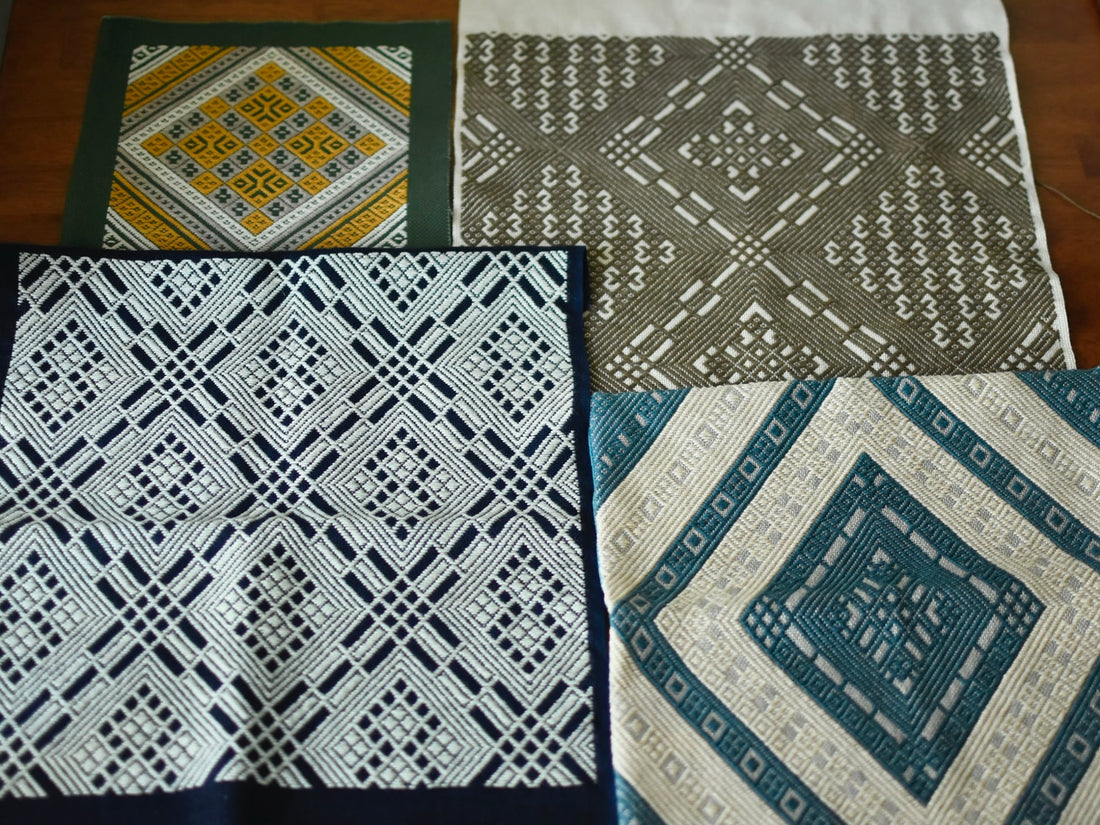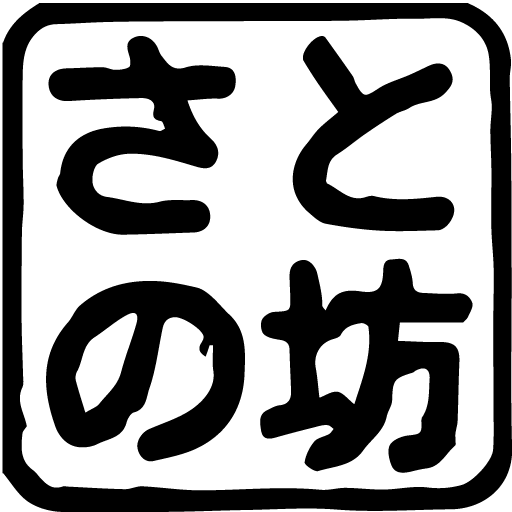
Let's try stitching Kogin
◆Let's try embroidering Kogin The other day I sent out a little invitation on Instagram . "Are you interested in making larger pieces that utilize the characteristics of traditional Kogin embroidery patterns?" That was the content. After the fall of 2024, we will finally get serious about Satonobo's activities in the United States, so I put it into words as it came to me. I haven't really thought of anything yet, so I'll think about it from now on.

(The bottom left is a traditional Kogin, the others are just Kogin stitches.)
◆Should I try stabbing it first?
I started trying out Kogin embroidery in 2020, just after my second son was born. The year before, I made my first Kogin (Kogin made in the area east of Hirosaki Castle across the Iwaki River) from Kogin (Kogin made from the Edo period to the mid-Meiji period) . I was shocked because I had only made modoko pieces up until then, and I thought, "So that's how Kogin embroidery develops!" and my interest in Kogin embroidery increased all at once. I began to think that if I could understand the basic patterns (modoko) of traditional patterns, I might not need a pattern . The basic patterns can be found in each design collection or in koginbank's modoko database .
Kogin is when you just take the fabric and needle and thread the needle, or when you don't even have a design prepared, and I've started calling it Kogin just trying to stitch . ( Here is my summary page on Kogin embroidery.)

(Imitation of Azuma Kogin)
◆The joy of Kogin embroidery without preparing a pattern When I first started Kogin embroidery, I enjoyed it because I thought it was important to stitch exactly according to the patterns in the pattern book or kit. Because I embroidered exactly according to the design, I learned a lot and was able to encounter the beauty and function of various patterns. I think you can really learn a lot from imitation, and I think it's important to respect traditional patterns.
Even with that perspective, when I encountered patterns born from my own mistakes , and koginbank told me that there are many patterns in old kogin that seem to have been made to fit together , I began to think that maybe it was okay to be more relaxed. In addition, I had many opportunities to think that the traditional patterns that exist were also born from mistakes.
No design means no mistakes , and just thinking about the excitement of not knowing what will come out made me want to stitch more and more. Making mistakes and trying to make things fit together is very interesting, as it feels like a living thing making a living thing. And while it's not perfect, it does come together, and when you look at it from a distance it looks cool, and I feel like there's something human about it.
No matter how impressive a piece of Kogin embroidery may look, when you unravel it you arrive at the Modoko, and when you take the Modoko apart, you see that it is just a line of a certain length. Of course, I am grateful that traditional patterns exist and I have a sense of respect for them, but I believe that if you proceed in an orderly manner, like growing a plant from a seed, the pattern will naturally spread .
I would like to increase my own experiences, put them into words, and enjoy them with people who are interested.

At first, I enjoyed embroidering on small pieces of fabric in my spare time. Little by little, I made them bigger, and each time I successfully filled a piece of fabric with thread , my trust in traditional patterns grew and I came to understand their greatness. Then last year, I experienced how I could create a Kogin the size of a single tatami mat by simply connecting traditional Kogin patterns while listening to the voice of the pattern. From then on, my desire to learn more about traditional patterns grew even stronger. With my current level of skill, I am not yet able to create a Kogin that is so neat and tidy that it will amaze you when you embroider it, but This is a piece that was created based on traditional patterns , so I think it is appealing in its own way.
Kogin embroidery has no set goal and you only discover the design when it is completed; it's so fun, I would be delighted if there are people who would join me in enjoying this craft.

▶️Shop (will be open when I return to Japan)
▶️Instagram (We share the simplicity and fun of Kogin embroidery through videos, etc.)
Satonobou
